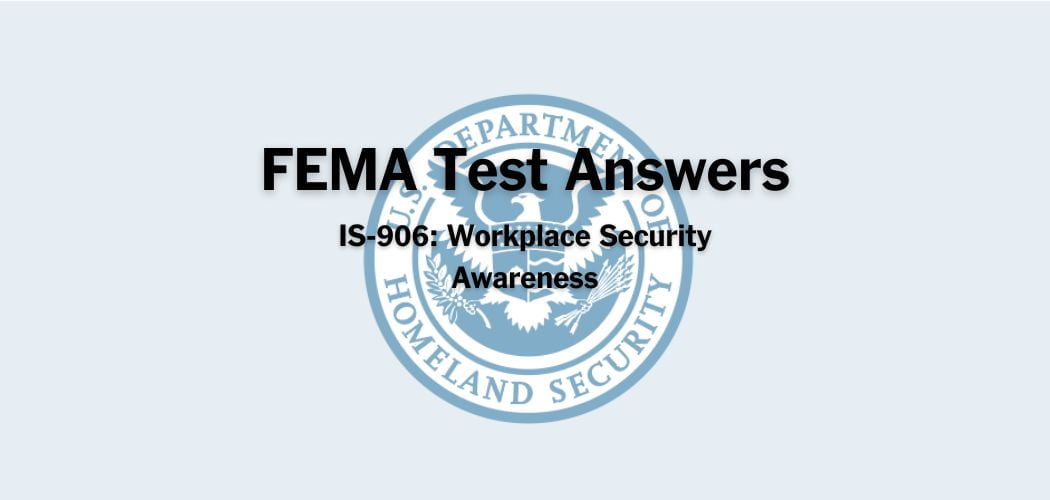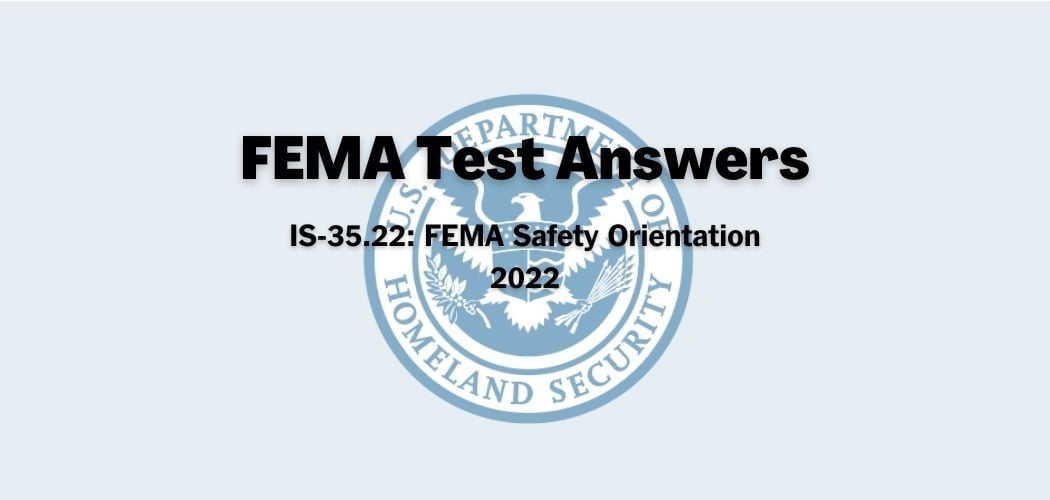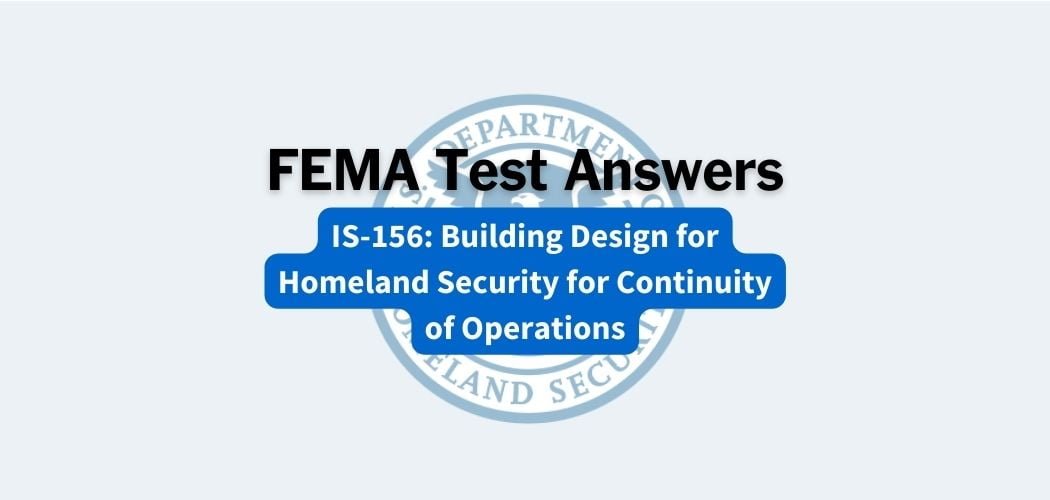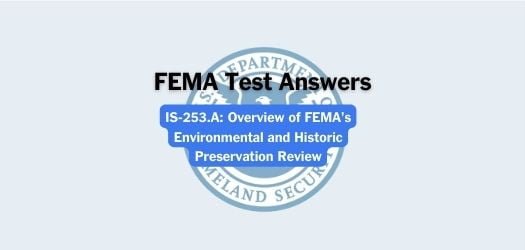Overview: The FEMA IS-75 course was published on 2/25/2011 to provide participants with an overview of U.S. military resources potentially available to assist civilian authorities, and procedures for obtaining and integrating military resources into disaster response and recovery operations.
Primary audience: The IS-75 course is intended for a civilian audience desiring an awareness level of knowledge about the use of military resources in emergency management.
FEMA IS-75 test answers
Each time this test is loaded, you will receive a unique set of questions and answers. The test questions are scrambled to protect the integrity of the exam.
Question 1. The National Guard Weapons of Mass Destruction – Civil Support Teams (CSTs) are frequently called out to investigate suspicious substances that are discovered in the course of other organizations’ routine activities such as during a response by the police law enforcement or in mail handling by the Post Office.
A. True✅
B. False
Question 2. The United States military, more formally known as the United States Armed Forces, consists of how many services?
A. three
B. four
C. five✅
D. six
Question 3. Usually, the commitment of Federal military forces for civil support operations follows a Presidential disaster declaration under which Act?
A. Posse Comitatus
B. Economy
C. Insurrection✅
D. Stafford
Question 4. This auxiliary to the Air Force is a volunteer civilian organization that performs search and rescue, courier service, and disaster relief operations.
A. U.S. Coast Guard Auxiliary
B. U.S. Army Corps of Engineers
C. Military Auxiliary Radio System
D. Civil Air Patrol✅
Question 5. This Title 10 Active Duty officer is assigned to each FEMA region and is generally involved in DoD’s response to Defense Support to Civilian Authorities (DSCA).
A. Defense Coordinating Officer
B. State Coordinating Officer
C. Emergency Preparedness Liaison Officer✅
D. Federal Coordinating Officer
Question 6. These voluntary forces are typically trained in specialized disciplines such as law, communication, search and rescue, or medicine.
A. Military defense forces
B. Field defense forces✅
C. State defense forces
D. Support defense forces
Question 7. Which military service is unique for its maritime law enforcement authority?
A. Army
B. Navy
C. Coast Guard✅
D. Air Force
Question 8. What is the best practice for planning for military resources?
A. obtaining all information relating to ESF activities relating to a disaster
B. researching online sources and databases for information
C. establishing and developing relationships with military officials✅
D. selecting the appropriate planning tools and methods
Question 9. What is the first line of military response to most incidents?
A. The National Guard✅
B. U.S. Army
C. State Defense Forces
D. U.S. Marine Corps
Question 10. What is the rule-of-thumb time limit for Department of Defense immediate response authority operations?
A. 12 hours
B. 24 hours
C. 36 hours
D. 72 hours✅
Question 11. What military resource is involved in many of the public works related to the nation’s waterways and coastal areas including dams, levees, and waterway dredging?
A. U.S. Coast Guard Auxiliary
B. U.S. Army Corps of Engineers✅
C. Military Auxiliary Radio System
D. Civil Air Patrol
Question 12. Tribal governments can elect to go to the state for disaster assistance or deal directly with the Federal government.
A. True✅
B. False
Question 13. What triggers long-term Federal recovery programs and response assets?
A. Emergency Management Assistance Compact
B. Emergency Declaration
C. Pre-scripted Mission Assignment
D. Presidential Major Disaster Declaration✅
Question 14. Law enforcement activities are authorized under Immediate Response Authority (IRA).
A. True
B. False✅
Question 15. Incidents typically begin and end locally and are managed on a daily basis at the lowest possible geographical, organizational, and jurisdictional levels.
A. True✅
B. False
Question 16. Which Act prohibits Title 10 forces from conducting law enforcement activities?
A. Posse Comitatus✅
B. Economy
C. Insurrection
D. Stafford
Question 17. During a Federal response, the Federal Coordinating Officer (FCO) only works with the DoD.
A. True
B. False✅
Question 18. This is a non-binding, collaborative arrangement among its members that provides a legal framework for states to assist one another in managing a disaster or an emergency that has been declared by the governor of the impacted state.
A. Immediate Response Authority
B. Memorandum of Agreement
C. Emergency Management Assistance Compact✅
D. DoD Instruction 6055.06
Question 19. Mostly found within the Army, this category of military resources can be associated with transport and engineering.
A. communications
B. heavy equipment✅
C. airlift
Question 20. Which military component belongs to the various states on a day-to-day basis?
A. National Guard✅
B. Active Duty
C. Reserve



